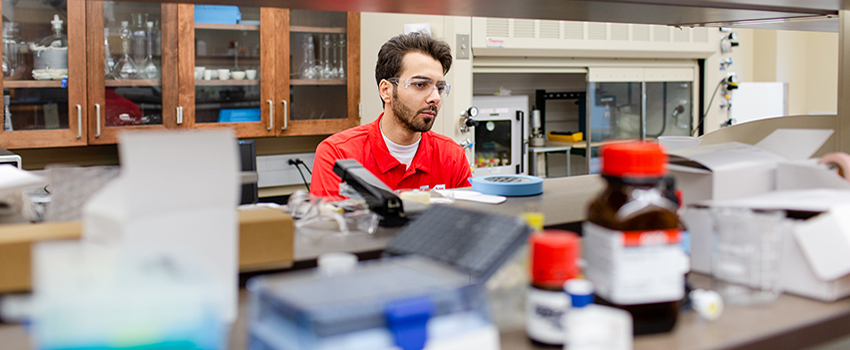Chemical & Biomolecular Engineering Research

Recent Research
Click here for more information on AgNPs: Silver Bullets for Skin Cancer Chemoprevention and Therapy (PDF)
Click here for more information on New Methods for Molecular Imaging and Microscopy (PDF)
The goal of this project is to develop a hyperspectral imaging endoscope for in vivo molecular biomarker imaging. This is a collaboration between Dr. Silas Leavesley, Dr. Thomas Rich (Pharmacology, Center for Lung Biology), Dr. Jack Di Palma (Gastroenterology), Dr. Carole Boudreaux (Pathology), and Dr. Paul Rider (Surgery).
Click here for more information on Molecular Detection of Cancers Using Spectral Endoscopy (PDF)
Dr. Christy Wheeler’s research focuses on the synthesis and characterization of highly
active, stable, and efficient water-gas shift catalysts prepared using supercritical
fluid deposition.
Click here for more information on Novel Catalyst Synthesis and Characterization (PDF)
Dr. Grant Glover and his research group builds novel adsorbent materials for gas separation
and storage. Particular interest in placed on understanding the impact of tuned surface
chemistry for targeted adsorption.
Click here for more information on Adsorbent Materials for Gas Separation and Storage
(PDF)
Recently, Dr. Kevin West and his team demonstrated that incorporating unsaturations into the alkyl chains of n-alkyl methyl imidazolium-based ionic liquids can significantly lower the melting points of these salts, while preserving structural features (the long alkyl chains) which should imbue the species with non-polar-like solvent properties. This phenomenon is similar to the way in which some organisms incorporate unsaturations in the alkyl chains of the lipid bilayer of their cell membranes to regulate membrane fluidity under varying temperature conditions. Currently, we are characterizing the solvent properties of these species utilizing solvatochromic and chromatographic techniques and developing a second generation of these materials that we believe will be more versatile as solvents and lubricants. Our group has been awarded an NSF grant to study these compounds and characterize their potential for use as selective separations agents.
Removing carbon dioxide from gaseous streams is of concern for a number of process streams, including sour natural gas, power plant emissions and removing carbon dioxide from the air in confined spaces such as submarines and spacecraft. Several Lewis-basic ionic liquids have been described in the literature and many have applied towards carbon dioxide capture. Currently, Dr. Kevin West is working to characterize the thermophysical properties of several promising candidate ionic liquids for CO2 capture. An NSF-MRI (Major Research Instrumentation, #1126597) award supports this work by enabling us to measure CO2 capture under industrially relevant conditions (for both absorption and stripping) for a variety of flue gas and atmospheric conditions.


